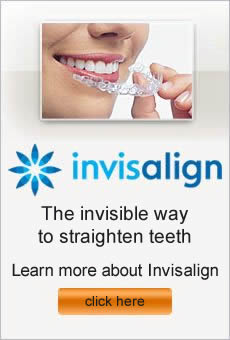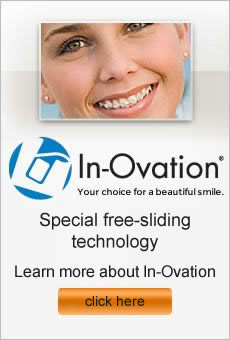As your child begins to lose primary teeth and permanent teeth are growing in, you may start to wonder when or if an orthodontic evaluation is needed. An orthodontist is a dentist with specialized training in aligning and straightening teeth. The American Dental Association and the American Association of Orthodontists recommend all children be evaluated for orthodontic treatment by age 7, or about the time permanent teeth begin erupting. By this age, orthodontists can detect potential problems with emerging teeth and jaw growth and recommend future treatment.
Starting the process early doesn’t mean your child will definitely need braces or get braces right away. However, early screening with an orthodontist can identify potential problems such as overcrowded teeth or bite problems, also known as malocclusion. Most orthodontists recommend seeking treatment for dental problems before your child stops growing. While growth is still ongoing, correcting dental problems is usually a shorter and less complicated process.
Traditionally, orthodontic treatment has been a single-phase process that begins between the ages of 8 and 14, after all baby teeth have fallen out and the majority of permanent teeth have replaced them. However, many orthodontists are now recommending a two-phase treatment plan which can begin at an earlier age. The first phase usually involves the use of a dental appliance as opposed to braces. The second phase includes the use of traditional braces. The braces phase is generally shorter than a treatment plan that was not preceded by dental hardware.
The best choice for you and your child will largely depend on the severity of your child’s dental problems. Have an evaluation early and discuss with your child’s dentist or orthodontist the best course of action to provide a lifetime of beautiful smiles.
Kids orthodontist in Sherman Oaks CA
If you think straightening teeth with braces is only for pimply-faced teens, think again. Thanks to modern technology, today’s orthodontic treatments are providing adults with more subtle and less visible options that you may find appealing for improving your smile. Why should you consider orthodontics as an adult?
Straighter teeth create a more beautiful smile that results in a more positive self-esteem, allowing you to present yourself to the world with improved confidence.
Even if you had braces in your younger years, as you age teeth tend to shift back toward their original positions, creating overcrowded or crooked teeth.
Straight, evenly aligned teeth are easier to keep clean, resulting in less decay and better overall oral health.
Braces can help correct bite problems that cause jaw pain, as well as change the position of neighboring teeth to make room for bridges, crowns, or implants.
Popular choices for adult orthodontic treatment include ceramic braces that are clear or tooth-colored, braces that have brackets that attach to the back of the teeth, and options like Invisalign that utilize clear plastic aligners to gently move teeth into a new position. All of these options offer lower profile appliances that most adults find appealing for improving their smile. Treatment times vary dependent on your choice of treatment and the extent of your orthodontic issues. To ensure long lasting results, you will likely need to either wear a retainer or have a permanent retainer placed.
To find out more about how orthodontics can vastly improve your smile and quality of life at any age, consult with a qualified orthodontist in Sherman Oaks, CA.
Getting braces is an exciting step toward having the best smile possible. It can fix problems with bite alignment, as well as addressing gaps between teeth or overcrowded teeth.
Before you get braces, you will need a full dental check-up. Your dentist will look for signs of decay or gum disease, and your teeth will receive a thorough cleaning. Photographs, impressions and x-rays will be taken for your orthodontist to study your teeth. At times, permanent teeth are extracted due to overcrowding on the jaw, allowing room for the remaining teeth to line up perfectly.
In the weeks before your braces are applied, you will want to enjoy some foods you will have to avoid in the immediate time following the application of your braces. Eat hard or chewy foods now, as eating them in the days following your application will cause discomfort.
Be sure to brush your teeth and to floss thoroughly the day your braces are to be applied. Having a clean mouth will allow your orthodontist to work more quickly and efficiently.
Keep a positive outlook! Focus on the appealing results to come for your teeth and smile. If you are experiencing severe anxiety, talk to your orthodontist about sedation dentistry options available to you. Many times, a mild oral sedative taken an hour before your procedure can help your mind be at peace while your orthodontist works.
Applying braces takes time. Be patient as your orthodontist works. Many offices have music or movies to help you pass the time. Ask what patient comforts are available for you.
Once your braces are applied, you will feel some discomfort as your teeth adjust. It can be painful to eat or drink. Plan ahead by acquiring anti-inflammatory pain medicines. Have plenty of soft foods and tepid liquids prepared to consume so you don’t have to worry about cooking when you’re not feeling well. The braces may irritate your tongue or cheeks. Wax can be used to cover rough brackets and to protect your mouth until it becomes accustomed to the braces.
Schedule your visit with Burbank orthodontist Dr. Fotovat about these and other recommendations to prepare you for braces.
Being a teenager can be difficult, and being a teen whose smile could use some improvement can be even more difficult. If your teen suffers from gapped, crooked, crowded, or misaligned teeth, you may be looking into Invisalign with your teen’s orthodontist as a smile solution.
In the past, metal braces were the standard for teens, leading to “metal mouth” smiles and the worry that food is caught there during lunch or after snacks. Metal braces can lead to even more self-consciousness for your teen. Using Invisalign will lead to the same results as traditional metal braces. While metal braces use wires and brackets to straighten teeth, Invisalign uses clear plastic trays, allowing your teen’s process of tooth straightening to be less obvious.
The Invisalign process begins with impressions and x-rays, providing valuable information regarding the current condition of your teen’s teeth. The mold made from the impressions serves as the reference for creating the custom-made Invisalign trays. A series of trays are used, gradually altering the teeth, leading to a more comfortable straightening process.
Invisalign trays are removed before eating, eliminating the trepidation associated with eating in public with traditional metal braces. Because there is no hardware to dislodge, there are no food restrictions, and your teen may continue to enjoy whatever foods desired.
Your teen will need to have good oral hygiene habits. Flossing once a day and brushing after mealtimes or at least twice a day is best. Invisalign trays are removed prior to these activities, allowing for an ease of oral care not provided by traditional braces.
Be sure your teen wears the Invisalign trays as recommend by his or her orthodontist. In order to maximize Invisalign effectiveness, your teen must wear the trays at all times, except during mealtimes or when brushing or flossing.
Improving your smile through orthodontic treatment can be one of the greatest gifts. No matter what age treatment occurs, the benefits apply to just about any age group. In deciding whether orthodontics might be right for you, it’s helpful to consider the types of problems that treatment addresses.
A consultation with an orthodontist will help you determine what might be wrong with your teeth or jaw, and find out the types of treatments that can offer improvement. One of the most obvious reasons that patients get braces is to straighten crooked teeth, which is only one of the motivations. Gaps between your teeth are another reason. A common problem has to do with a patient’s bite, which can be labeled as maloclussion in a number of ways. You might have an underbite, overbite, or a crossbite. If your smile doesn’t line up properly or your teeth aren’t in the correct positions, orthodontic treatment may be right for you.
Just like every reason for orthodontic treatment isn’t the same, the correction methods are not always the same either. Traditional braces, clear aligning trays, headgear, rubber bands, and retainers are some of the common treatment options. The complete process may take anywhere from just a year to several, depending upon the severity of the issues and the patient’s progress.
As mentioned before, improved self-esteem is one benefit of orthodontics. Others include improved tooth or jaw function, better facial profile, more thorough oral hygiene, speech improvement, better teeth wear patterns, reduced risk of injury or tooth loss, and more.
Whether you are 15 or 52, orthodontic treatment is something that may be considered if you are unhappy with your smile. See an orthodontist to learn if treatment can turn your smile around.
Most orthodontic patients have questions about braces, especially wondering how their lives will be affected by wearing them. Here are some answers to some of the more commonly asked questions regarding life with braces.
Will I be able to talk normally with braces?
- With braces, speech can be affected initially, while your mouth and tongue adjust. Additional appliances such as a palatal expander may interfere with your speech more noticeably, but with time you can learn to speak clearly and properly.
Will it hurt to wear braces?
- You are likely to experience some discomfort for the first week after your braces have been applied. At first, your tongue and cheeks may feel sore from rubbing against the metal parts of the braces. Dental wax is available to smooth over the rough edges until your mouth has grown accustomed to your braces. You will also feel some discomfort following each adjustment of the braces as your teeth begin to move. Take an over-the-counter pain reliever with an anti-inflammatory property, such as ibuprofen, to help with your discomfort.
What foods should I avoid while wearing braces?
- Avoid hard foods or biting on oversized pieces of foods. You may dislodge the bands or brackets, and damage the wires. Avoid eating nuts, biting your nails, or chewing on the ends of pens or pencils. Cut hard fruits into slices before eating them. Avoid sticky foods and candy.
How do I brush my teeth with braces?
- Brushing your teeth while wearing braces is much more challenging than cleaning them normally. Do not leave food particles on your braces, as this can lead to decay and gum disease. Brush your teeth immediately following meals as well as each morning and night. It is prudent to carry your toothbrush with you. You will need to replace your toothbrush often, as brushing over braces causes them to wear out faster.
Schedule your appointment with Sherman Oaks orthodontist Dr. Fotovat today to get answers to any questions you have regarding your live with braces. Don’t let uncertainty hold you back from moving forward with your smile goals.



